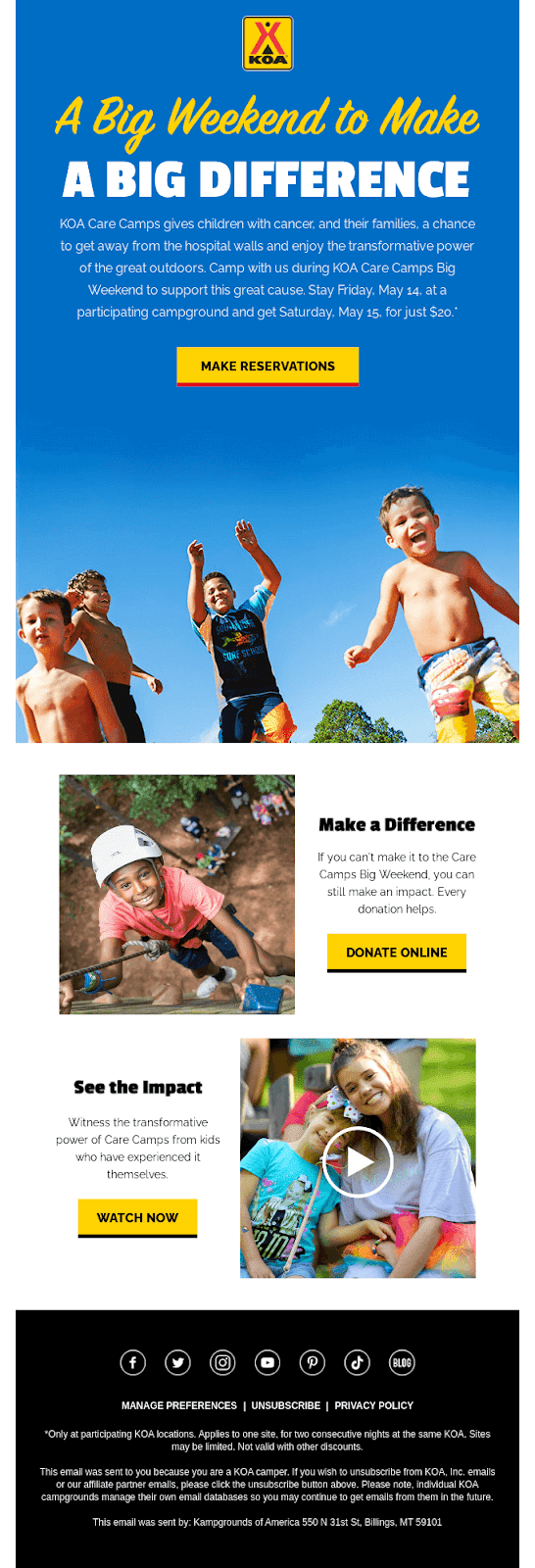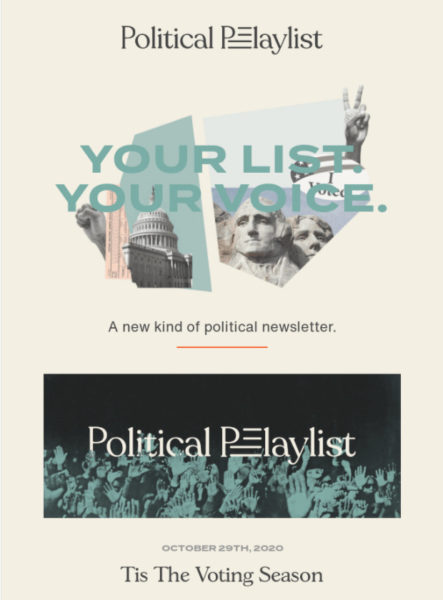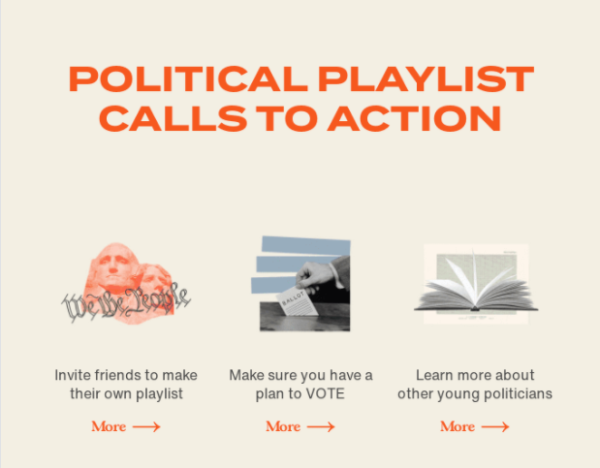
When using email marketing to reach out to your list of subscribers and supporters, you don’t always want to ask for support in the email body. Some emails can provide updates, share photos and results of successful fundraising events, and tell impactful stories. So how do you request donations and resources without asking for them in the body of the email?
Leverage the power of the CTA! Take some inspiration from the examples below for different calls to action nonprofit organizations have used. Whether it’s looking for donations, volunteers, or changing the world, there’s a CTA for that.
What is a call to action for nonprofits and why does your email need one?
A CTA is a marketing term that stands for call-to-action. CTAs are used in almost all digital channels, including retargeting ads, website pages, and email marketing. The main purpose of CTAs is to drive the reader towards an action, whether that is to click a link, read a blog, buy something, get more information, or, most importantly supporting your mission.
Calls to action nonprofits need to use
When it comes to nonprofit email marketing, the CTA is one of the 7 elements of nonprofit email design, but we could argue that the nonprofit sector relies most on successful CTAs. Every nonprofit email should have a compelling CTA prompting immediate action from readers. Why?
Remember how we talked about sending out different types of emails such as notable updates and stories? One of these types of emails can be a CTA in and of itself to ask for funding outright. Every email can’t do that because as much as your supporters love your cause, they’d stop opening your emails. You’ve taken the time to build your nonprofit email list. Use it to the best of your ability! Regardless of the email topic, leaving out relevant CTAs in everything you send out is a recipe for consistently missed opportunities.
Tips for nonprofit calls to action
- Keep it simple. Basic and direct CTAs let your readers know exactly what you’re looking for.
- Spark emotion. Using your email CTAs to evoke certain emotions among your subscribers might spark a passionate response.
- Inspire action. People like to know exactly where their money is going when making a donation. While keeping it direct, use language specific to your organization to reaffirm the mission and beneficiary of donor funds.
Don’t be afraid to use multiple CTAs if it makes sense with the content of the email and what you’re trying to accomplish. Take a look at this example email with multiple CTAs:

How many CTAs do you see? It’s not a trick question, but there can be different answers. If you guessed five, you would be right:
- Make Reservations
- Make a Difference
- Donate Online
- See the Impact
- Watch Now
If you guessed three, you would also be right. How? While the five phrases are considered calls-to-action, a CTA in a marketing email is a clickable link to a pop-up, form, or page where the reader takes action. In this case, the “real CTAs” in this email example are the three yellow buttons:
- Make Reservations
- Donate Online
- Watch Now
What else do you notice about the word choices? It might seem like stating the obvious, but sometimes stating the obvious is a great reminder! Active directional verbs are the only words acceptable for CTAs.
Donation call to action examples
Use action verbs that are clear and reaffirm the ask. When possible, include words specific to your cause’s mission. For effective CTAs that request a specific dollar amount, link directly to a “checkout” or PayPal page. Suggesting a dollar amount may also spark a higher donation than the supporter initially intended. Call to action ideas for fundraising and donations:
- Give $25
- Support a Child
- Save a Pup
- Plant a Tree
- Donate Now
Even general CTAs will attract action from people looking to support your nonprofit but may not know how. They will want to weigh their options and learn more about the different ways to get involved.
Another great tactic is to put the CTA in the perspective of the beneficiaries of your cause. This technique works best when pictures are used at the same time. A smiling child will always create an emotional experience for the donor, encouraging their support. Examples of this technique include:
- Find Me a Home
- Send Me to Camp
- Keep Me Warm
- Adopt Me
Bonus tip: A great way to drive donations for a specific funding campaign is to show how much you have raised already, and more importantly, how much you have left to go. Just remember it’s OK to get specific when it comes to dollar amounts.
Volunteer call to action examples
As a nonprofit, your mission is to spread awareness of your cause and inspire others to make a difference. Using your email CTAs to drive certain emotions among your subscribers may spark them to get involved. When someone wants to get involved with the mission, donating time in place of dollars, these volunteer CTAs can help them make a decision:
- Volunteer Today
- Sign Up Now
- Take Action
- Be the Change
- Get Involved
Here’s another effective example of an email prompting readers to volunteer using CTAs.

As you see in the example above with pictures and direct CTAs, email marketing is an effective way for nonprofits to get boots on the ground.
Political call to action examples
Political calls to action are unique in that their goals can be to prompt several different types of actions. They could be public service announcements to get out and vote with links to local voting resources. They can also be centered around donations for campaign funding. Some CTAs to inspire political action include:
- Rock the Vote
- Register to Vote
- Find My Polling Place
- VOTE
- Support the Campaign
- Donate $10
- Contact your representatives
Here’s a unique take on a political call to action. This email is in the style of a long-form newsletter, but it closes with subtle but relevant CTAs. This is a perfect example of what we talked about earlier, including CTAs in every message type. Here, they use the action words “invite,” “make,” and “learn” to inspire action.
Actions speak louder than words
When it comes to CTAs, the main goal is to make it easy for supporters to help you while leading them to take action. You took action when deciding to get involved with a nonprofit. Your supporters feel the same sense of fulfillment you do when they help your organization succeed.
We have one last CTA for you: Sign up for Constant Contact to start leveraging the power of CTAs for nonprofit marketing. You can also read about how to leverage Facebook’s call-to-action button to improve click-through-rate.






